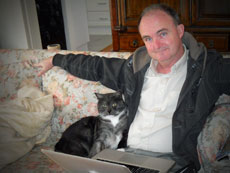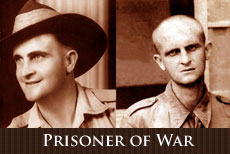This evening I followed a number of educators on Twitter who had followed me earlier. I like to review each individual and ascertain to which degree I will derive value from their microblogging.
There is one thing I find when I perform this task. I tend to prefer Twitter users who utilise a photograph of themselves as their Twitter avatar. I realise that the photograph may not be the genuine article but by and large I think the photographs used are “fair dinkum”, particularly after reviewing their web sites, etc.
From time to time I am followed by educators who do not utilise a photographs of themselves as an avatar. It may be a cartoon, an animal or something else. In some instance it may simply be a generic Twitter avatar. I am more reluctant to follow such individuals unless my search and review of the individual indicates that their tweets and background provide education value and are a good addition to that network that formulates my PLN.
As well, there are education organisations that also Tweet and more than likely they utilise a logo or icon as their Twitter avatar. This is quite okay however I think they should link to an about page via their profile that sets out the identities of the individual(s) responsible for the tweets. That will allow their followers to put a face to the tweets.
In short I like to link the tweet with a face. It is that human thing. Avatars that are photographs assist in adding a sense of personality, humanity and connectedness to the message.
I have had a variety of avatars and they are shown below. I once used a favourite photograph of myself as a young kid but I stopped using that when it occurred to me that as an education professional it would possibly be wiser to use a current photograph of myself.
![]()
My present image, with my wife Shao Ping, is duplicated across all my social media sites and for me it is WYSIWYG… “what you see is what you get”. As an educator, as a teacher, I feel that is the correct approach for myself to take if I am to blog and tweet professionally.

Back in April 2009 I raised the issue of avatars and educators on Twitter. I follow a number of teachers, social commentators, relatives and organisations on Twitter and vice versa. There is a wide variety of avatars among those that I follow.
As I wrote back then on my old blog a number of teachers and educators that I follow do not utilise a personal photograph for their avatar. Their avatars range from comic book characters through to line drawings, second-life portraits, logos and pets. Some educators utilise images of themselves taken as children or even images of their own children.
At the time I raised this point on Twitter and it generated a conversation between Lyndon Sharp and myself. I reproduce the conversation below in chronological order top to bottom.
John Larkin: My avatar was once a favourite photo of me as a young kid but then I felt it was a little weird. Some might feel it is misleading. Thoughts?
Lyndon Sharp: @john_larkin Twitter avatar choice: room here for PhD research project. Quirky? Cartoon? Provocative? School Yrbk approach? Best portrait?
John Larkin: @lyndons Initially I had no concern regarding the avatar of me as a youth but then felt it would possibly mislead.
John Larkin: @lyndons We teach our students to be wary of those they communicate with as they may not be what they seem. So, what about teacher avatars?
Lyndon Sharp: @john_larkin Avatar choice *is* as yet unstudied. Competing interests: need fr privacy, desire fr openness & projection of self-image…
John Larkin: @lyndons this idea re avatar is interesting. What are we trying to project? One’s employment can have an impact.
Lyndon Sharp: @john_larkin I get th feeling people more experienced in Social Media tend to choose something other thn a photo-portrait: a small privacy?
John Larkin: @lyndons yes, self-employed, consultants, etc have more latitude on their choice.
Perhaps, as Lyndon suggests, this question or issue could be the focus of a research project. If a teacher chooses to blog or publish online professionally in an open manner should their profile avatar be a reasonably recent portrait photograph or not?
Some may even feel that a portrait photograph is simply more professional. At least a recent photograph.
It has been a couple of years since I had that conversation with Lyndon and I think it is timely I ask the following questions again.
What do you think? Is this too retrograde? Too conservative? Should educators consider the views of other potential stakeholders: employers, students, parents?
Perhaps an educator is blogging incognito. Their choice of avatar may not be an issue in this case. It is an interesting question. A possible conundrum. As Lyndon indicates there are competing interests. What is your position on this? Not an issue? Free country?
Addendum: Just added this link: The Joy of Tech: Field Guide To Social Media Avatars
PS. I updated the links over on my Twitter resource page tonight as well tonight.








Aug 04, 2011 @ 20:44:04
I use my most recent photo as my avatar because I believe that it is important to be real to engage in good genuine sincere conversation with people. You need to develop trust in any relationship and this can only be done if you are real and sincere! I rather talk to real people than talking to a “flower” or a “cat” for that matter. Again, this is my personal preference and as a teacher, I want people to know that it’s the real me that they are looking at.
Aug 04, 2011 @ 20:52:41
Agreed on the photo WYSIWYG bit , my avatar is the same as how I look now and is the same across all Social platforms. There is definitely a certain degree of “comfort” , if I may call it that, associated with twitter users with photos over someone who looks like snoopy or kermit .
Like your blog ! Good stuff !
Aug 05, 2011 @ 18:04:37
I think it’s all about purpose and context.
If I’m trying to get people trusting me as a real person, I’d be sure to use a current portrait.
If it’s a more formal (professional) site like linkedin or academia.com I’ll choose my professional work portrait if I think I need to prove that I’m ‘in the game’ the avatar equivalent of the difference between being soneone who has a business card vs those who don’t).
then again, if I want to show how prepared I am to be a shit stirrer on those sites (me? noo…!) I may choose something more playful or casual…but still portrait based to show I’m not afraid. Then again, AGAIN…if I’m trying to be provocative but also signal that I’m prepared to fight a heavy-weight fight about something, I’ll tend back toward the professional shot.
On any sites where I am trying to collab with teachers, the professional portrait is OFF the table altogether. It’s intimidating, and it says ‘I’m more important than you’ (even if you don’t mean it that way). Professional portraits also generate suspicion that your participation is only happening in case your boss drops by, or so you can generate material for a promotion.
If I am trying to engage students (secondary or uni) it is a fine line between using something culturally ‘cool’ without trying too hard. The WYSIWYG approach is what I have found to work best here. Trying to prove to students that you are cool via your avatar choice is a losing battle…embrace your inner cool by presenting as your ‘normal’ (i.e. Inherently cool) self and they will respond…
It sure is a fraught choice. Angela Thomas has done some great work around online identity and avatars, might be worth a look?
Thanks for the post! I agree, the humble avatar choice is an underrated process, and as you can see from just my little confession, one that deserves some critical literacy attention too.
Aug 05, 2011 @ 20:32:47
In my mind, there’s no question. If you’re serious about entering a discussion with others, a picture goes much further to building that initial credibility than a picture of your dog. Once that credibility has been gained, it probably matters less.
Aug 05, 2011 @ 20:36:22
Well, I too, prefer a face to the tweet. Being personal with people is important to me, especially with a medium such as the internet where non-verbal communication is almost non-existent. Of course, I don’t think too hard about what photo goes where and for what purpose. I’m me everywhere, so I try to use the same avatar. I do ensure I look decent though (thank you Photoshop).
Aug 05, 2011 @ 22:01:24
It is that human thing. Avatars that are photographs assist in adding a sense of personality, humanity and connectedness to the message.
And here I’m going to thoroughly disagree with you. I do not use a photo of myself as my avatar. Rather, it’s an image that I chose years ago to represent me for several reasons:
– The color scheme is vivid but not garish; it shows up well in varying sizes
– The expression is thoughtful and perhaps daydreamy, which matches my online persona. I more often use blogging and other online communication to reflect about teaching than to think about the busy-ness that surrounds me: laundry, dishes, bills, and so forth.
– The quill is particularly important – it is not the easiest way to write, but it is fun, fancy, and a bit whimsical. I do not particularly enjoy writing, and my style tends toward conversational and sometimes playful.
– Additionally, my ‘ideas-for-the-future’ posts are tagged “feathers,” in reference to “Hope is the thing with feathers,” so it applies in that way as well.
Our choices in avatars – just like our choices RL in attire – are a way of communicating nonverbally with others. That communication also demonstrates “personality, humanity, and connectedness to the message.”
I had no concern regarding the avatar of me as a youth but then felt it would possibly mislead.
I really, REALLY don’t see how this makes any sense. Do you think your followers are likely to believe you’re a ten-year-old?
We teach our students to be wary of those they communicate with as they may not be what they seem. So, what about teacher avatars?
And here I think a non-portrait avatar would HIGHLIGHT this idea (things aren’t always what they seem) and serve as a reminder for students to be careful.
***
I guess it’s easier to judge whether people are professional or not based on their avatars (or appearance) than on the merits of what they say (and/or do). But it seems rather short-sighted to me.
Is it so difficult to remember that you’re communicating with a real person if the avatar isn’t a recent photo?
Sep 04, 2011 @ 15:14:39
I have always preferred a photo for authenticity and engagement. My problem with comes from meeting someone from my PLN recently at a TeachMeet who figured the photo avatar was not recent. It is about 6yrs old now, so if you use a photo, how often should you change it. Therein lies another problem as whether we intend it or not we are creating a brand of our personal social media image thru our avatar and so the branding should not be subject to frequent change as we have the “customers” within our PLN to consider every time we re-brand ourselves.
I like the way Nick Jackson has branded @largerama with a luminous blue background to a recent-ish photo which crosses the cartoon-like image with a real photo … or is it?
Sep 04, 2011 @ 16:58:40
To me, the proof of the pudding is in the eating, not what it looks like. If I follow tweets, or blogs it’s because what they offer resonates with me. It doesn’t matter what form their avatar takes. I like the layers that exist in life and people’s personalities, hence my avatar. For those that don’t know the character and want to know why I choose it to represent me, just ask. Communication is part of the social media narrative, and asking these questions gets you to know the other person at the other end of the tubes.
Having a photo as an avatar doesn’t really prove anything to me. How do I know it is who you say it is, unless I know you or eventually meet you? Most people, too, would choose a flattering photo, but for those who don’t feel there IS a flattering photo it becomes a quandry. I’ll admit that I’m a bit that way myself, and I know others who definitely use non – photo avatars because of that.
I’ll keep choosing people with good things to say, rather than if they have a picture or not.
Jonesy 🙂